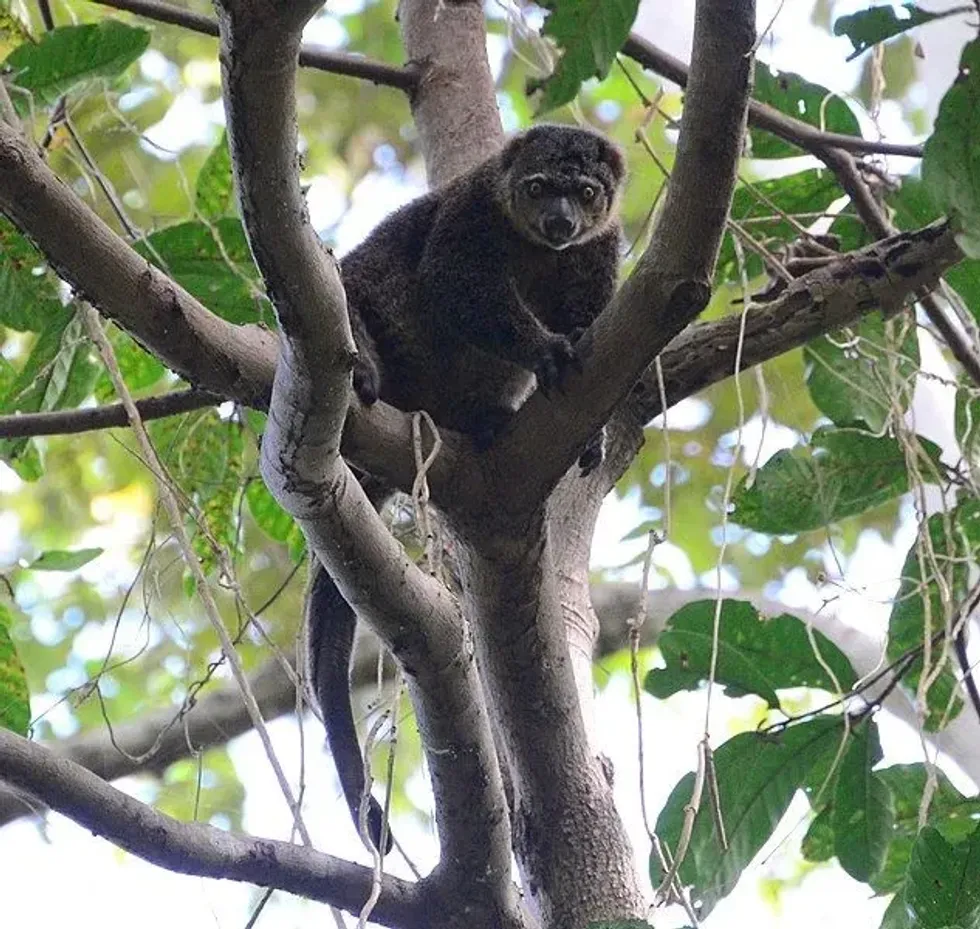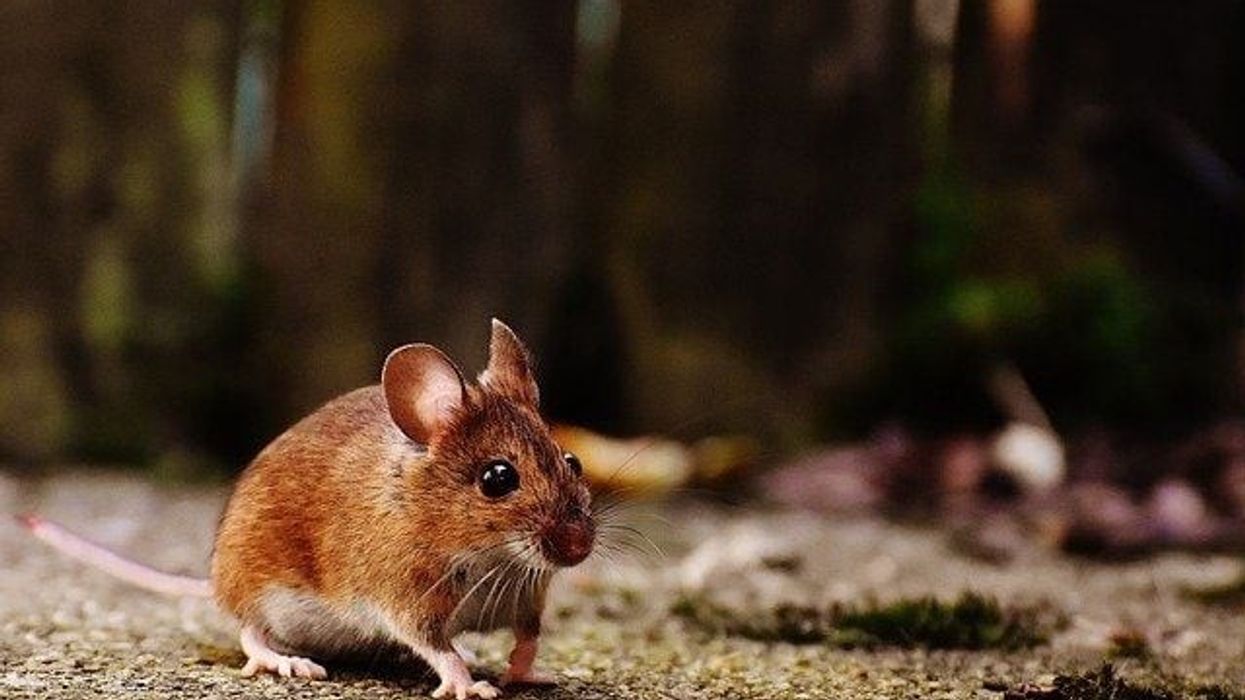The bear cuscus (Ailurops ursinus) under genus Ailurops has been ordered into two different species, namely the Talaud bear cuscus (Ailurops melanotis) and Sulawesi bear cuscus (Ailurops ursinus or phalanger ursinus). This species of bear cuscus is endemic solely to Indonesia and some of its adjoining islands such as Butung, Togian, and Peleng.
They are usually found in pairs or in a group of four residing mainly in the upper canopy of lowland tropical rainforests.
Trees form a vital part of their diet. These animals are shy and reserved when it comes to socializing but they live life at an unbearably slow pace.
Human activities such as large-scale deforestation and clearing of forest cover for agricultural practices coupled with the ill effects of global warming and climate change have drastically impacted their habitat. The bear cuscus population has projected a steady decline since 1994 due to malpractices like pet trade and poaching.
Stringent measures need to be taken to prevent these marsupials from the face of extinction.
Continue reading to know more about the bear cuscus. You can also check out some more facts about the langur monkey and gray langur.
Bear Cuscus Interesting Facts
What type of animal is a bear cuscus?
Bear cuscuses (Ailurops ursinus) have been classified as arboreal marsupials.
What class of animal does a bear cuscus belong to?
The bear cuscus belongs to the Mammalia class.
How many bear cuscuses are there in the world?
Due to the lack of quantification, precise details about their numbers are unknown. Nevertheless, this marsupial species has been given a Vulnerable conservation status by the International Union for Conservation of Nature (IUCN) Red List due to its dwindling numbers.
Where does a bear cuscus live?
The Talaud bear cuscus can be found in the Salebabu Island while the Sulawesi bear cuscus can be located in the islands of Sulawesi, Butung, Togian, Peleng, and Muna, and some nearby islands of Indonesia.
What is a bear cuscus's habitat?
The bear cuscus habitat mainly comprises the upper canopy of lowland tropical rainforests. They generally avoid disturbed areas like plantations or gardens and maintain a great distance from human settlements. This arboreal species is heavily dependent on trees.
Who do bear cuscuses live with?
This species tends to avoid large groups but can be found in pairs as the bear cuscus prefers to stick with its partner or in a group of three to four individuals.
How long does a bear cuscus live?
Generally, bear cuscuses can live for a maximum term of 11 years in the wilderness.
How do they reproduce?
Very little information about the breeding behavior of the species is known. A bear cuscus attains sexual maturity within a year.
After mating and consequent birth, the young remain inside the mother's pouch, feeding and developing inside the pouch for almost eight months. After eight months, weaning occurs when they become capable enough to fend for themselves. A female gives birth once or twice annually.
What is their conservation status?
The International Union for Conservation of Nature (IUCN) Red List deems this marsupial species of the bear cuscus as Vulnerable, almost to the point of being endangered.
Bear Cuscus Fun Facts
What do bear cuscuses look like?
This species comes in a moderate size with brown, black, tan, or gray as the primary fur color while the coat is thick, dense, and bear-like. This marsupial possesses a very short snout, small ears, elongated claws, and a prehensile tail. The underbelly is lighter in shade.
How cute are they?
Have you laid eyes on a bear cuscus with a young one in its pouch? It is a very adorable sight to see. They are just as cute as the colobus monkeys. The lackadaisical strides and chucklesome actions add to this animal's cuteness quotient.
How do they communicate?
The animal is not too social and generally prefers to stay away from human habitation or interference and dwell in pairs or very small groups. Therefore, communication is minimal. This species interacts via vocalizations and scents. Harsh chatters and accompanying clicking sounds of these cuscuses have been recorded.
How big is a bear cuscus?
An average bear cuscus size normally ranges around 24 in (61 cm). The species is comparatively larger than Virginia opossums measuring around 12.9-37 in (32.9-99.1 cm).
How fast can a bear cuscus move?
On average, the speed range of a cuscus is estimated at up to 15 mph (24 kph). The accurate speed limits of the bear cuscus of the family Phalangeridae remain unknown.
How much does a bear cuscus weigh?
The average weight of the Sulawesi bear cuscus (Phalanger ursinus), as well as the Talaud bear cuscus (Ailurops melanotis), is about 15-22 lb (7-10 kg).
What are the male and female names of the species?
Males and females are referred to as male and female bear cuscus since they don't have special names.
What would you call a baby bear cuscus?
A baby bear cuscus is regarded as a joey, like a baby kangaroo.
What do they eat?
This marsupial animal is known to be herbivorous. However, the bear cuscus prefers a folivorous diet consisting primarily of leaves extracted from a variety of trees. However, this species can also survive on a fruit-enriched diet. They also consume flowers, nectar, and flower buds.
Are they active?
Bear cuscuses are extremely lethargic animals. They are mostly found dozing or resting slothfully.
In actions, they are quite identical to the armadillo that rests for about 18-19 hours a day. The inertia in these cuscuses is due to their diet consisting of low carbs. Since their diet is mainly vegetation and fruit, these animals engage in slow-paced actions to aid digestion.
Would they make a good pet?
This tree-dwelling species is best suited to the forest environment and is absolutely unsuitable as a house pet. Maintaining a bear cuscus can prove to be a burdensome task as they require a habitat enclosed with trees to thrive along with their special leafy diet.
Moreover, they prefer to remain aloof and undisturbed. Therefore, this animal doesn't fit in well as an ideal pet.
Did you know...
In North Sulawesi estimations of only two adults per 247 acre (100 ha) has been recorded in the years 1993-94. Also, a decline of 95% in the Ailurops ursinus population was witnessed until 1994 in Tangkoko-DuaSudara Nature Reserve owing to large-scale hunting. The condition is still worsening.
How does a bear cuscus differ from a dwarf cuscus?
Although both animals can be traced exclusively in Indonesia, a bear cuscus exhibits some major differences with a dwarf cuscus. As the name suggests, a dwarf cuscus is the smallest in size while a bear cuscus is the largest cuscus species.
While the former is nocturnal, bear cuscuses are essentially diurnal. The diet preference also differs as the former enjoys a fruit diet while the latter mainly indulges in leaves although they also consume unripe fruits.
Is a bear cuscus a marsupial?
Do you know that a bear cuscus isn't actually a bear? The animal is an arboreal marsupial. The species possesses a long, prehensile tail as well as elongated claws that it uses for navigating from tree to tree, swinging from one branch to another. Marsupials are animals who carry their young ones in their belly pouches like kangaroos.
Here at Kidadl, we have carefully created lots of interesting family-friendly animal facts for everyone to discover! Learn more about some other mammals from our colobus monkey facts and golden-headed lion tamarin facts pages.
You can even occupy yourself at home by coloring in one of our free printable bear cuscus coloring pages.









